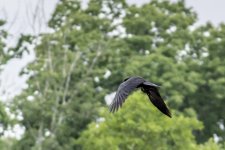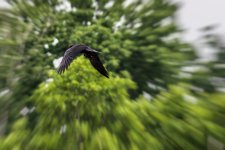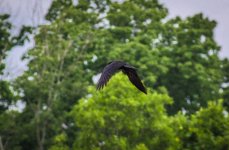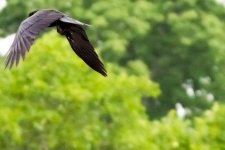I gave it a shot since I am also into BIF shots. I first want to inform you of what I find with this particular shot as to wrong and right.
I know BIF photography is new to you since you said this was your first BIF shot.
Some tips:
- Never shoot a bird from behind. Always from a profile side or frontal shots (there are a few exceptions).
You shot from behind as the bird passed
- Always include the eye(s) and make sure the eye is sharply in focus even if nothing else is.
In your shot you cannot see an eye at all
- Use small enough aperture that most of the bird, if not all, is in focus (f/6.7 to f/11 will usually do it).
You used f/8 which is good
- Fast enough shutter speed, at least 1/1250th to eliminate blur (in most cases)
You used 1/3200th which is more than enough
- Make sure the sun is in the right place to illuminate the bird and not create deep shadow under neath and don't shoot into the sun
- Dark birds against a lighter sky likely need EV compensation of +.5 to +1.0
-
Your ISO was ok at 800 but if you had dropped your shutter speed to 1/1250th you could have used a lower ISO and reduced the noise and grain
Here is the best I could do first in Lightroom then in Photoshop CS2






